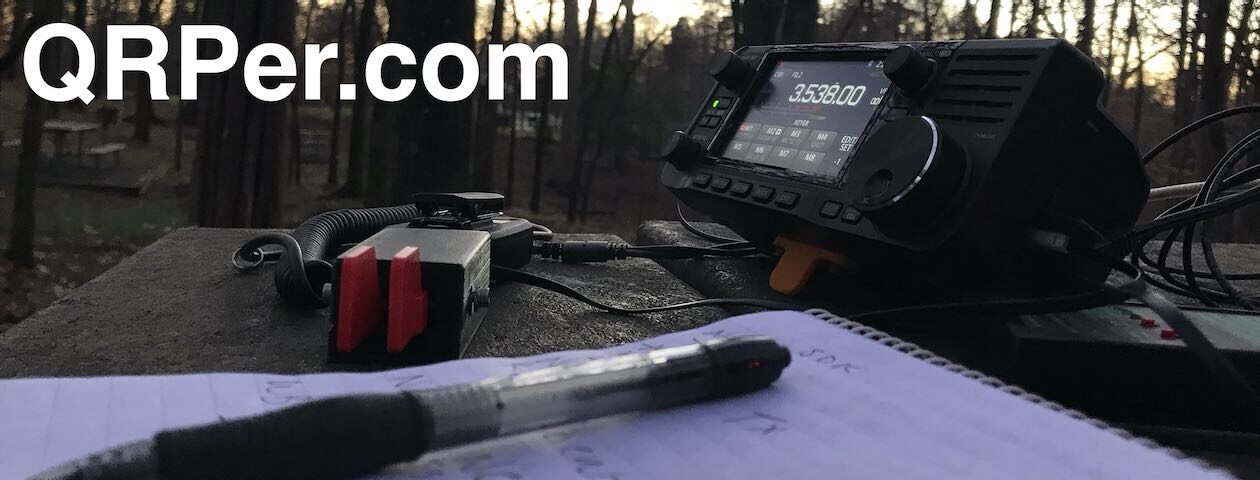by Thomas (DM1TBE as SP/M0KEU/P)
After completing my first POTA Rove, it was time to look for other opportunities. The next day, we planned a trip close to the border between Poland and Germany. Due to the high density of POTA parks in Poland, it was not too hard to find a POTA park for me.
The park Łęgi koło Słubic Nature Reserve (SP-1908) is a floodplain for the Oder River, the border river between Poland and Germany. As described in my previous post, the border was shifted from further east to the Oder river as part of the territorial changes at the end of World War II. Later, Poland was the only country, along with Czechoslovakia, where people from East Germany, i.e., the Soviet-controlled part of Germany, could travel to without permission. This arrangement came to an end in 1980 with the rise of the Solidarność (Solidarity) movement in Poland, a social movement against the pro-Soviet government, and the subsequent declaration of martial law.

After the reunification of Germany in 1990, the border became a kind of ‘wealth border’ between Eastern and Western Europe, giving rise to various issues such as crime and immigration. Following Poland’s accession to the European Union in 2004 and its entry into the Schengen Area in 2007, which involved the removal of all border controls, the situation improved. Now the only thing indicating a border ahead is the black-red-yellow post.
The current rapid pace of development in Poland does not make it impossible to overtake Germany in the foreseeable future.
Back to the activation. I took the following equipment with me:
- Icom IC-705
- LiFePo 4Ah battery
- BaMaKeY TP-III – ultra compact twin paddle
- SOTABeams Bandhopper III, a linked dipole for the 20-, 30-, and 40-meter band
- JPC-12 vertical antenna
- pen and paper
When going (as in walking) to an unknown park without knowing the circumstances, I like to have the option to choose between an antenna with a small and a large footprint. So far, I have just made a handful of car-based activations. But I increasingly like it as it opens another world with big antennas and bigger rigs. We recently made a test activation with an Icom IC-7300 and a 6-band Cobweb antenna from AWK, by chance also from Poland.
But that’s another story.
Not sure if I have mentioned it: My BaMaKey had a technical issue and I had to send it back to the manufacturer. The repair took just a couple of days and the communication was very smooth and convenient. I was happy to have my favourite key back in time before my vacation.
So after I dropped my family to do their business, I went on and looked around for a nice place. Of course, I had to see the actual border.

The weather looked a bit difficult, but it remained dry.
Eventually, I found a place in a meadow with more than enough space for the SOTABeams linked dipole so I could leave the JPC-12, the ground mounted vertical, in the backpack. In the meanwhile, I am used to the SOTABeams antenna. I can build it alone in less than 5 minutes and – as it is hard to beat a dipole – have a very good antenna for operating QRP.
The activation was difficult. It was a holiday season, a morning during a weekday, and the conditions were tough. After 30 minutes, I had just 4 QSOs. So I asked in the chat groups of my local ham radio club and a German POTA group for help. After 1.5 hours, I ended the activation with 15 QSOs, of which 5 were from the alerted groups. At least the place was nice, and the weather was not as hot as in the days before.

The next day, I wanted to spend some time with my 7-year-old son, and I was looking for an opportunity to combine it with a quick activation. I remembered the bunkers and museums of the Ostwall (East Wall), technically Festungsfront Oder-Warthe-Bogen (Fortified Front Oder-Warthe-Bogen). The structure, spanning 120 km / 75 miles in total, was constructed between 1934 and 1944. It stood as the most technologically advanced fortification system during the era of Nazi Germany, and continues to be one of the largest systems of its kind in the world today. Continue reading Poland Adventures – Part II
















